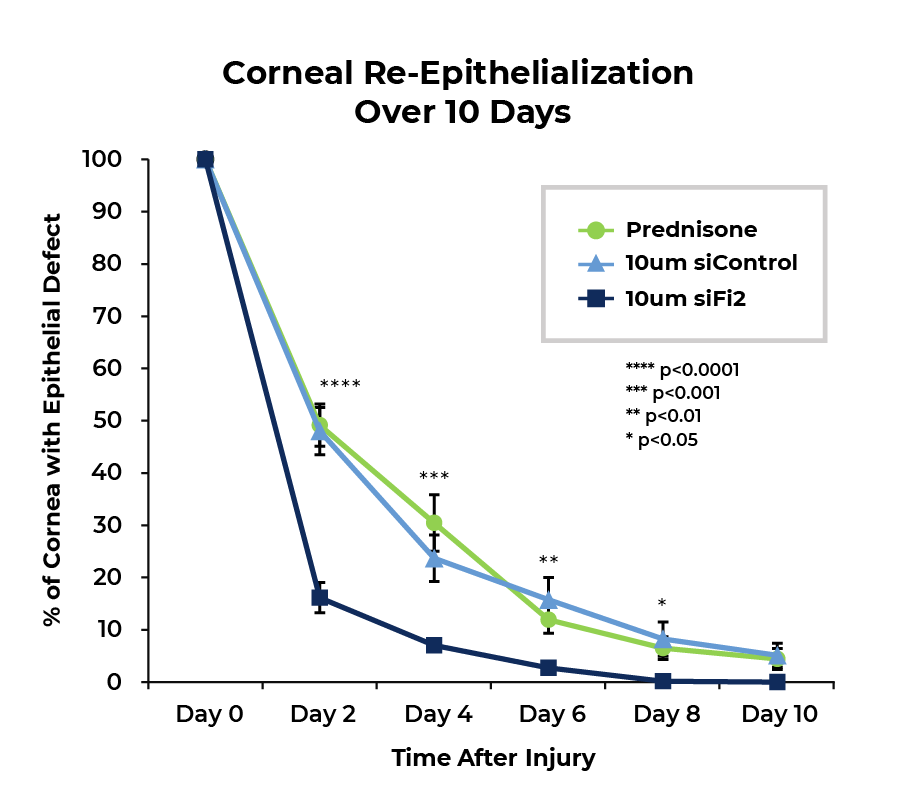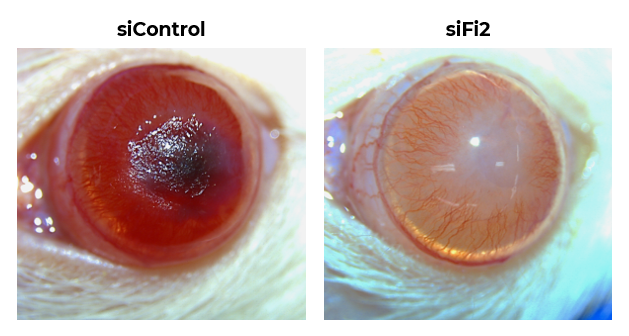Corneal Burn Repair
In conjunction with grants from the National Institutes of Health and Department of Defense, MicroCures is pursuing therapeutic applications of MCR-231 for repair of chemical burns of the eye.
In preclinical studies in rat models of corneal chemical burns, treatment with MCR-231 demonstrated the ability to expedite the initial stage of repair. This included an accelerated rate of corneal re-epithelialization. Furthermore, MCR-321 treatment also contributed to downstream healing processes that led to improved corneal transparency, restoration of healthy nerves and maintained visual acuity. MicroCures has partnered with a CMO to produce 2 GMP compatible formulations which have been tested successfully in the highly relevant porcine burn model. These siRNA delivering formulations are commercially viable to produce.

Speed is Critical for Successful Repair Following Chemical Corneal Burns
Chemical burns represent up to 10% of all ocular injuries. Damage related to ocular chemical burns is often most severe in the front segments of the eye, including the cornea. These injuries can result in permanent damage, including blindness.
To achieve optimal healing of a chemical corneal burn, there must be a period of rapid re-epithelialization at the site of the injury. MicroCures believes that MCR-231 can play an important role in triggering re-epithelialization, as well as other key healing processes related to cell motility.

Following an alkaline chemical burn to the cornea, rats were treated with either siFi2 or a control siRNA every other day for 14 days. The above images reflect the corneas at Day 14. Whereas, the control siRNA-treated cornea on left remains heavily damaged, the siFi2-treated cornea demonstrates significant healing with greater transparency and less edema and scarring.

The above histology images capture the status of the rat corneas at Day 14 following every other day treatment with prednisone, control or siFi2. As with the cornea images above, these demonstrate significantly enhanced healing following with MCR-231 as compared to prednisone and control. The MCR-231-treated cornea shows a more normal epithelium layer with a more organized cell structure, as compared to control and prednisone-treated corneas.

